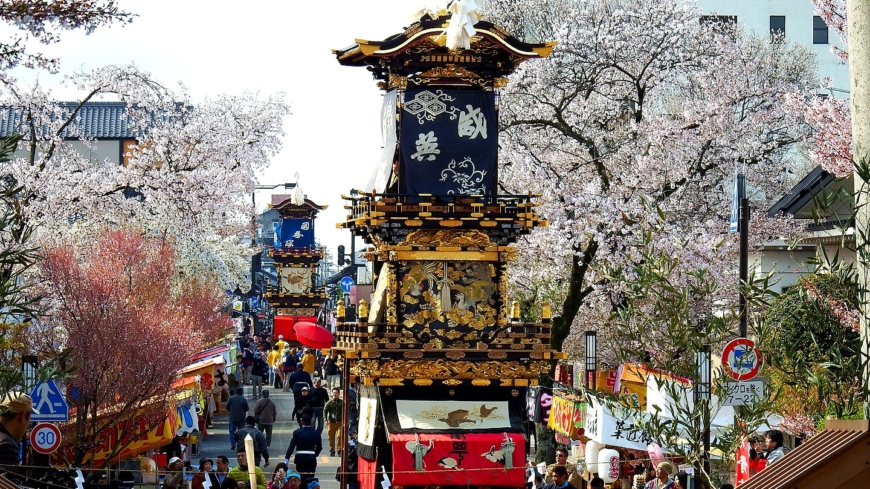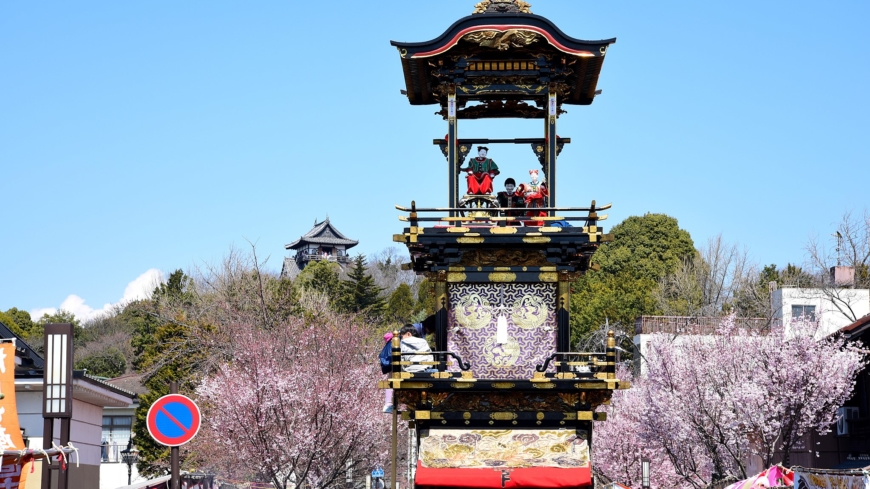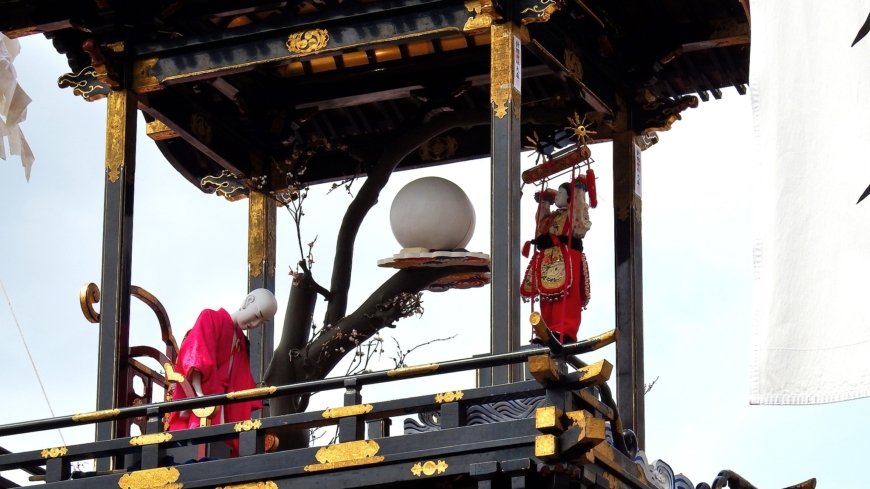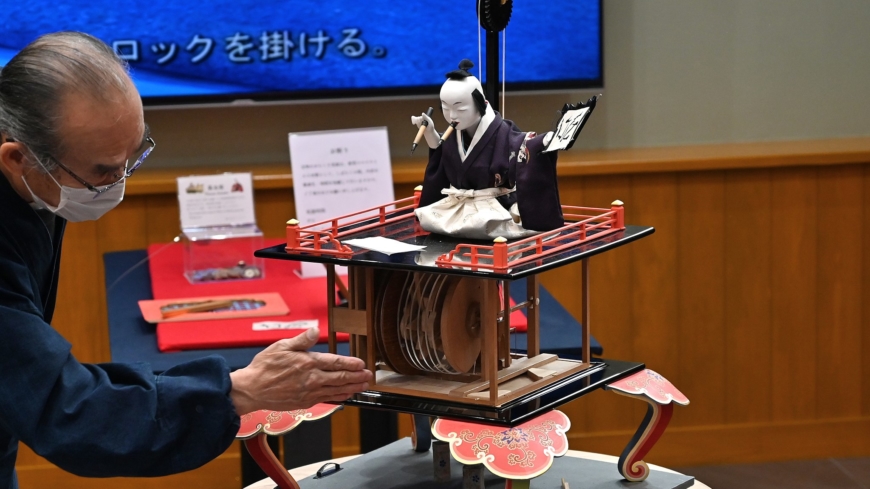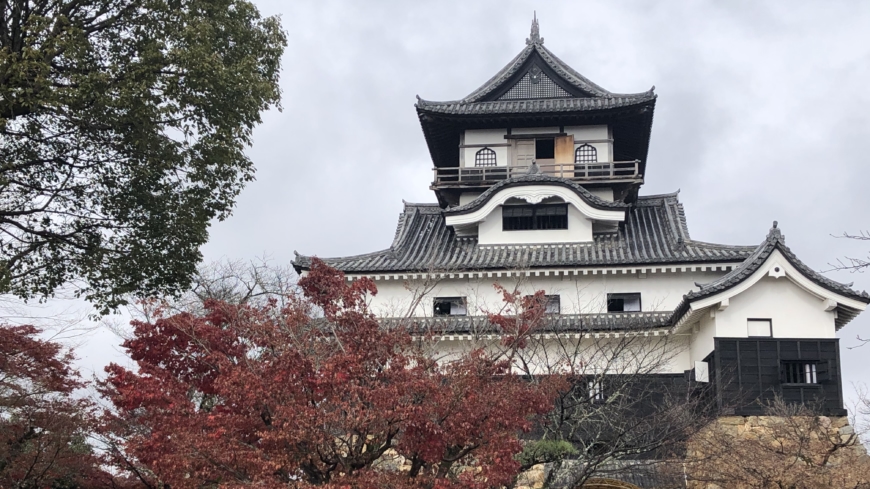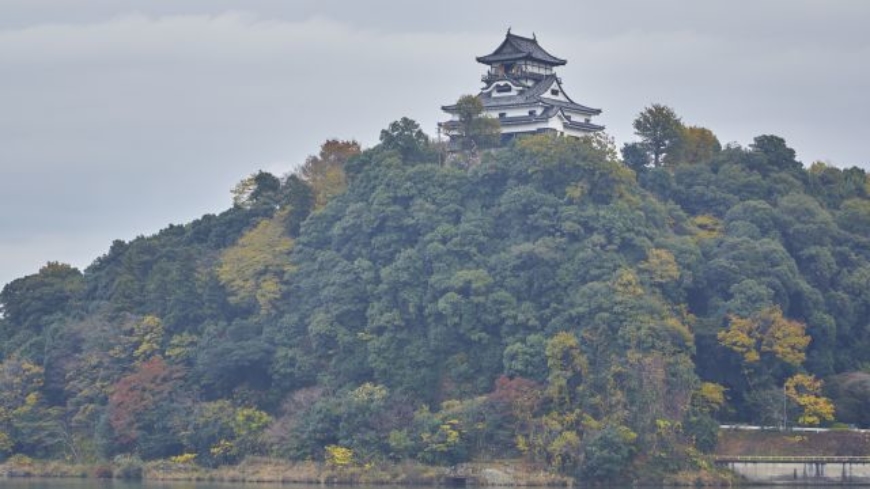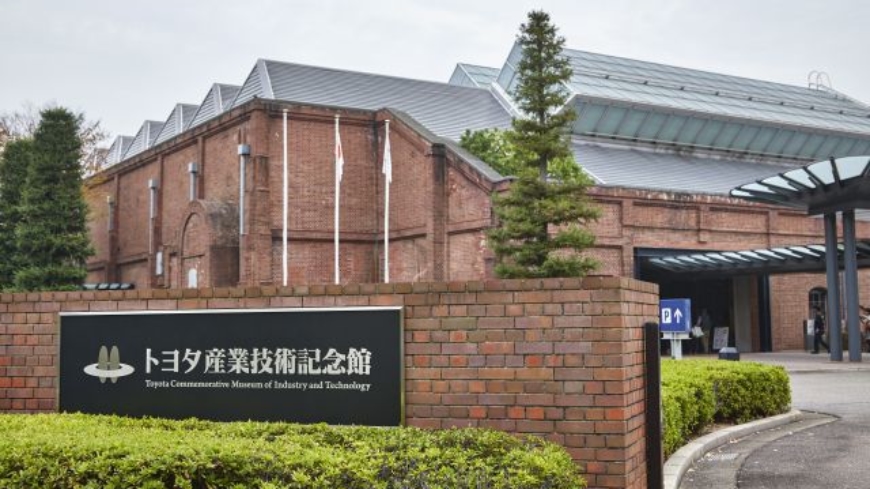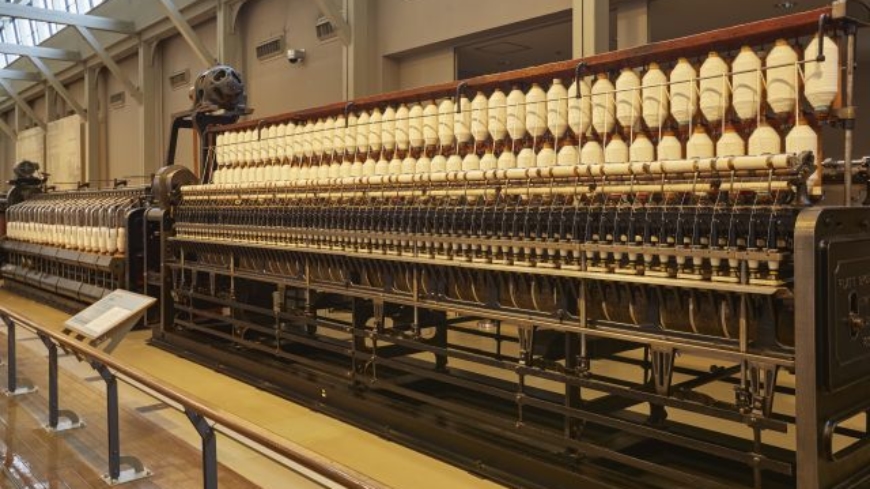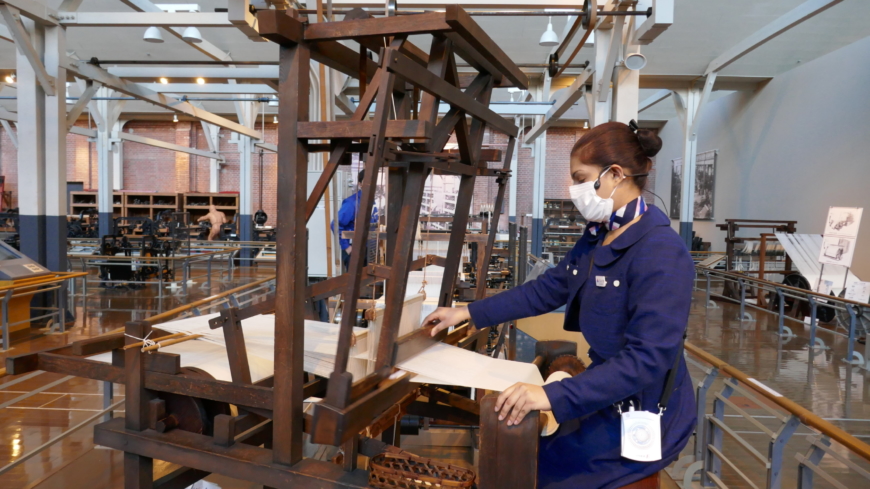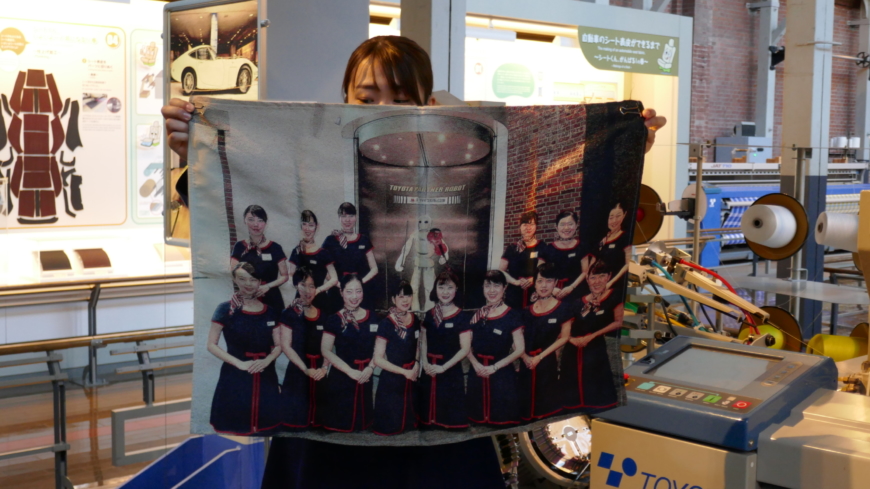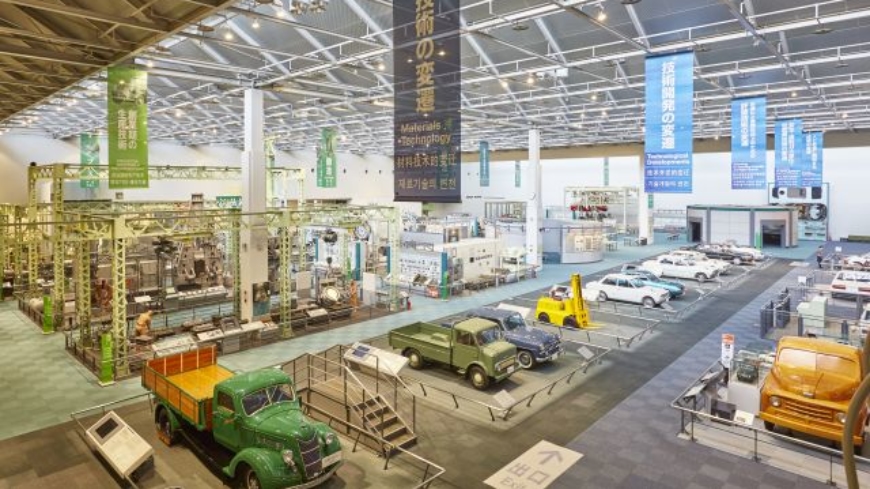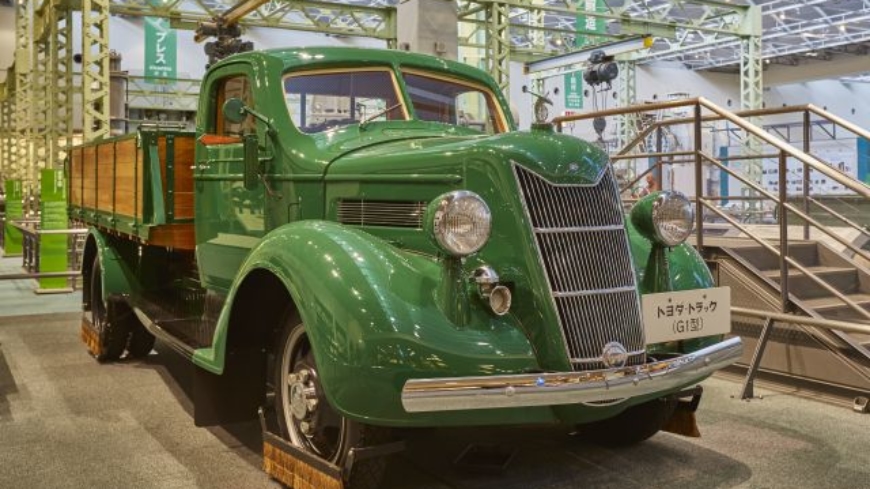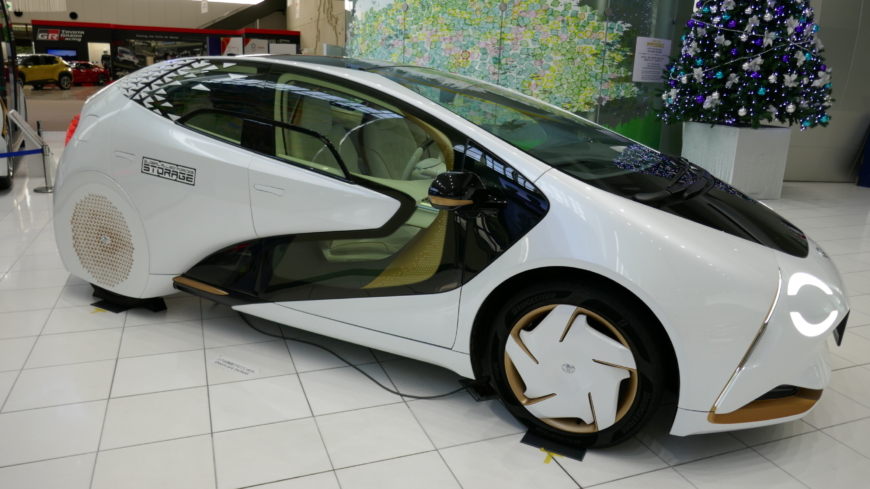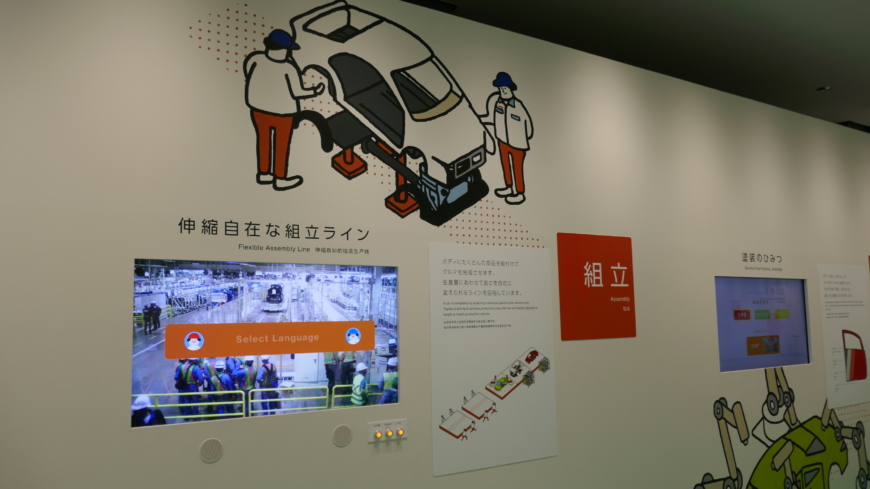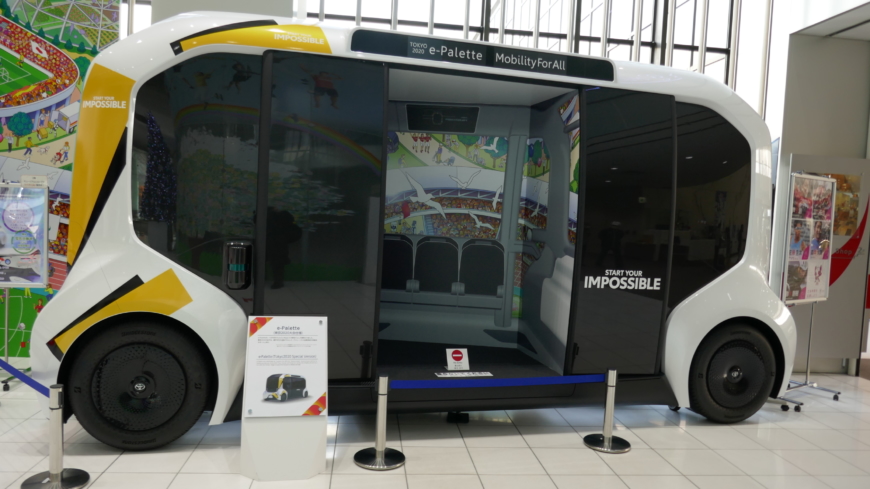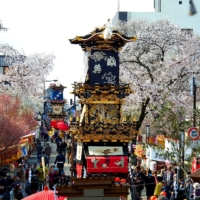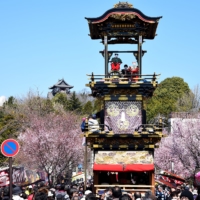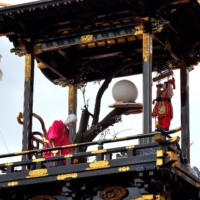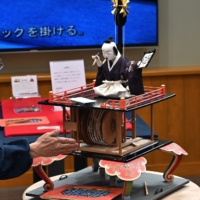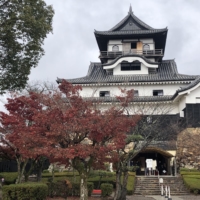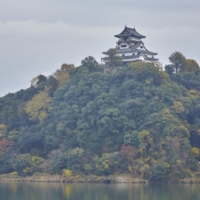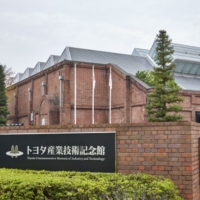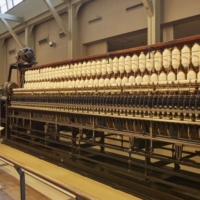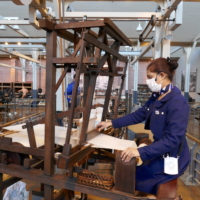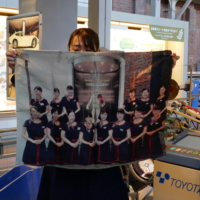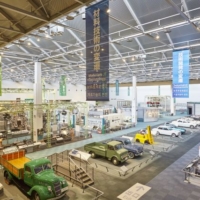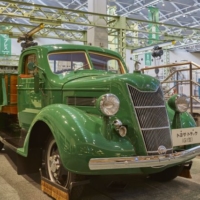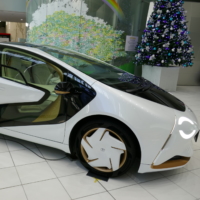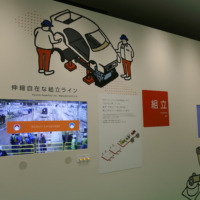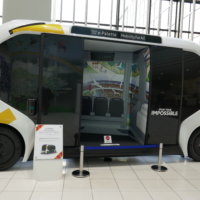The puppeteer’s hands move quickly, deftly pulling ropes tethered to a mechanical karakuri doll used in yama floats in local festivals. The doll, clad in jewel-toned finery reminiscent of that worn by Japanese feudal nobility, moves its arms and head from side to side.
The demonstration takes place at the Imasen Inuyama Karakuri Museum in the central Aichi Prefecture town of Inuyama. The newly opened facility showcases about 38 karakuri dolls, either manually operated or automated by intricate internal mechanisms.
The dolls’ creation harks back to the Edo Period (1603 to 1867) when mechanical development in Japan began to flourish. Aichi’s reputation as a powerhouse for karakuri development and later, watchmaking, was partly cemented because of the Owari clan, progressive feudal lords with a long history of promoting manufacturing and industrial technologies — carpentry, textiles, ceramics and steelmaking — within their domains.
Such is the reverence held for karakuri dolls that Inuyama holds an annual festival, begun over 380 years ago, where the dolls are presented to the deity of a local shrine. The dolls perform atop towering yama floats up to 8 meters high and weighing 5 tons. The floats are propped up by teams of men, cheered enthusiastically as they maneuver the vessels along Inuyama’s narrow streets. Some of these elaborate floats can be seen any time of year at the Dondenkan Inuyama Festival Museum.
A visit to the Inuyama Cultural Assets Museum and Inuyama Castle, the oldest castle in Japan, gives further insight into this period. Only the castle’s keep, dating back to 1537, remains today. On display within are samurai armor, weaponry and folding screens. Unmissable are the panoramic views from the top of the four-story building overlooking the Kiso River and Gifu Prefecture, which convey how important maintaining territory was to the rulers of the day.
The evolution of precision mechanical technology employed in karakuri doll-making can be seen in developments that led to the creation of Japan’s automotive industries, of which Toyota, also located in Aichi, is arguably the world’s most famous.
A visit to the Toyota Commemorative Museum of Industry and Technology in Nagoya reveals the company’s transformation by the Toyoda family from weaving and loom technology specialists to the motoring behemoth that it is today.
Visitors to the museum, which continuously ranks well on sites such as TripAdvisor and employs multilingual apps for ease of communication to global visitors, are welcomed by doll-like robots, a nod to Aichi’s rich karakuri past.
The red-bricked museum was once the site of the Toyoda Spinning and Weaving factory. On display at the textile machinery pavilion are demonstrations of various technologies and machinery used by the company at this time, including a circular loom invented by Sakichi Toyoda in 1906. The present-day Toyota carmaker is still involved in developing new technologies for the textile industry, examples of which can be viewed at the museum.
The museum’s automobile pavilion explains Toyota’s car-making history as well as showcasing the technologies used since its inception. Visitors can learn about deep-rooted concepts of monozukuri (conscientious manufacturing) and craftsmanship, where manual skills and advances in technology are seen to progress hand-in-hand.
Established in 1977 to commemorate Toyota’s 40th anniversary, Toyota Kaikan Museum, in the city of Toyota, displays new car models and cutting-edge technologies. Plant tours (reservations needed) allow visitors to see the automaker’s assembly line and examples of the firm’s engineering excellence. Themes and concepts surrounding safety, production processes, environmentally friendly cars and Toyota’s corporate social responsibility efforts are also addressed. A showroom, featuring a variety of latest model cars, encapsulates the achievements made in the region’s rich industrial culture.



